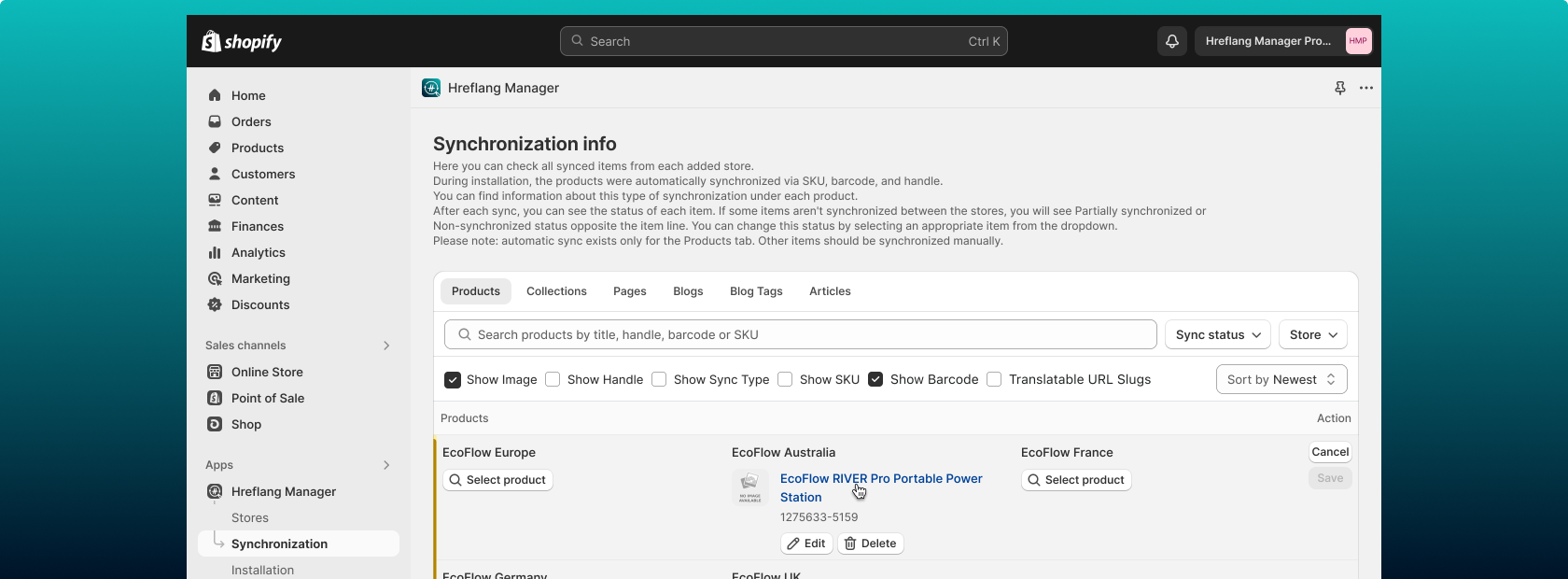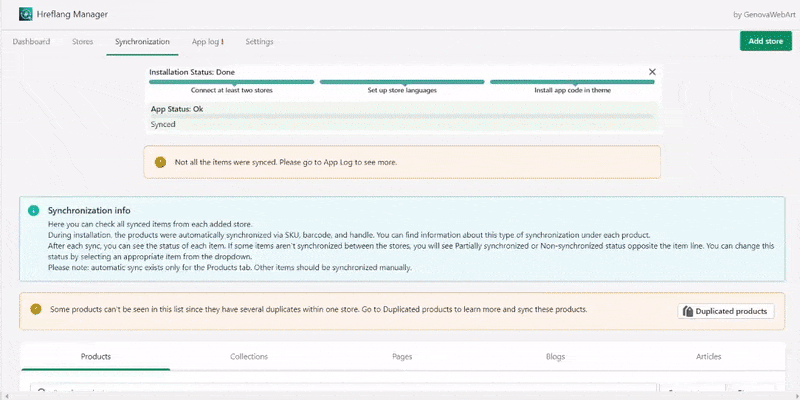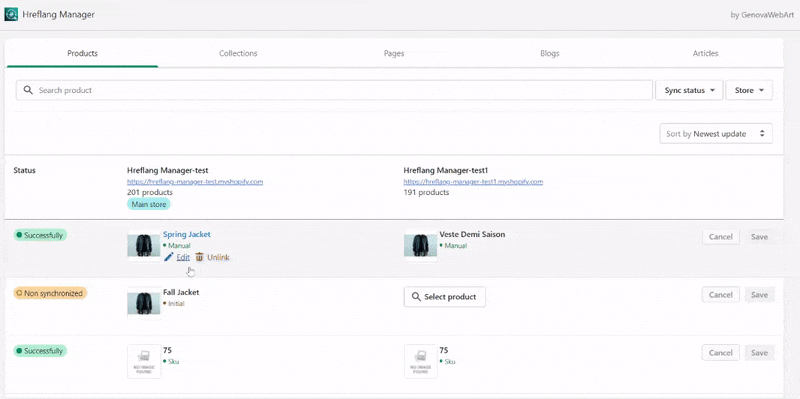
Synchronization page
On this page, you can sync products, collections, pages, blogs and blog articles between all your stores. By default, the sync is performed automatically (for products only). However, it can be done manually (for all the items and duplicated products).
Automatic synchronization
The sync process starts by default when a new store is being added to the app list. Automatic synchronization for products is performed by Barcode, SKU, and handle. Please note that some items may not be synced automatically so that you might want to sync them manually.
The sync result is usually available in several minutes and depends on the number of items and stores. If the items may have not been synced automatically, you might want to sync them manually.
Manual synchronization
There is a possibility to sync items manually in the app. It can be done following the next steps:
- Go to the Synchronization page.
- Find any product row which contains non-synced elements.
- Press the Search Product field or Edit button and start typing an item’s name (3 symbols minimum). A product list with matched items should come up.
- Select the required item in the field and press the Save button. The item’s status should be updated for all the stores connected to the app.
If the wrong products were synced during the auto-sync, you might as well press the Unlink button to delete the wrong connection.
Synchronizations for pages, collections should be performed manually by handle. To update the list of pages, blogs, and blog articles, you need to press the Refresh button on the top of each tab. Please note that blogs should be updated before updating articles.
Synchronization results
When the sync is completed, its result is available in each product row. There you can see if the items have been synced fully, partially, or non-synced.
Full sync
Full sync means that a particular item (a product, page, etc) has been synced with the same item on each store connected to this Shopify app.
Partial sync
Partial sync means that a particular item (a product, page, etc) hasn’t been synced with the same item on at least one store. If you receive such a result, you might check this item availability on each store, or sync it manually.
Non-sync
Partial sync means that a particular item (a product, page, etc) hasn’t been synced with the same item on all other stores. If you receive such a result, you might check this item availability on each store, or sync it manually.


